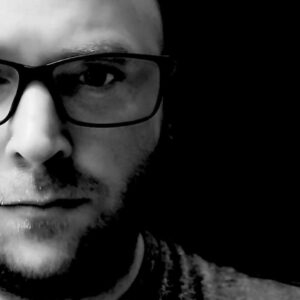End Plastics
Cancer Alley Can’t Wait
September 5, 2023
Take a deep breath of fresh air, as if it was your last. Now, think about what it would be like if that actually were your last breath of fresh air. Imagine every breath after was thick, musty, harsh, and nauseating. Pollution is often viewed as a more prominent problem in poor or developing nations, but the unfortunate truth is many Americans experience this too. Especially those living in an area known as Cancer Alley.
Cancer Alley is an 85-mile-long region in Southeastern Louisiana, stretching along the Mississippi River and spanning from New Orleans to Baton Rouge. It’s also known as Louisiana’s Chemical Corridor. Some residents and activists call it Death Alley, and for a good reason: pollution is killing the people who live there. Plastics manufacturing and production facilities, and other petroleum-chemical plants are major culprits.
Along the Mississippi River, Louisiana’s landscape was once a patchwork of fields, farms, and plantations toiled and tended by enslaved African Americans. Today, instead of scenic landscapes, its skylines are a grim collection of hundreds of metal towers, refineries, industrial complexes, and petrochemical plants billowing out constant columns of smoke and flames. Many of the people who live in Cancer Alley now are descendants of slaves who once worked in those fields.
Reports and assessments by the U.S. Environmental Protection Agency have identified Cancer Alley as one of America’s major hotspots for toxic air pollution. In some Louisiana parishes, the EPA has identified cancer risks more than 700 times the national average.
Cancer, lung disease, and other illnesses constantly stalk the residents of Cancer Alley. Residents have reported skin conditions, shortness of breath, and other breathing problems. This also puts Cancer Alley residents in a higher risk group for COVID-19 injury or death. Polyfluoroalkyl substances (PFAS) are also present in drinking water at levels hundreds of times higher than currently-suggested safe levels for human consumption. The soil is similarly contaminated.
Cancer Alley Residents are Fighting for Their Lives
The EPA has studied, monitored, and acknowledged the problems caused by “sacrifice zones” but has failed in addressing these problems head-on with effective near-term and long-term solutions. The lives, livelihoods, and futures of the people who live and work there are the sacrificial offerings. Residents of Cancer Alley have been fighting for recognition and change. Sharon Lavigne is a retired special education teacher who has been working to raise awareness and fight back against the proliferation of cancer-causing plastic pollution in her community.
In 2018, Lavigne founded Rise St. James, an organization focused on bringing environmental equality and justice to the people of St. James Parish who live in one of Cancer’s Alley’s polluted hotspots. Lavigne does not have radical demands. She simply wants residents to be able to breathe clean air and drink clean water. Her organization has had limited success but managed to block the construction of a massive plastics manufacturing plant in 2018. Residents and various activist organizations also teamed up to file a complaint with the EPA against the Louisiana Department of Environmental Quality (LDEQ).
A 2022 letter from the EPA to LDEQ acknowledged the community’s health concerns and stated, “…based on facts discovered thus far during EPA’s investigation, EPA issues this Letter to present significant evidence suggesting that the Departments’ actions or inactions have resulted and continue to result in disparate adverse impacts on Black residents of St. John the Baptist Parish, St. James Parish, and the Industrial Corridor.”
St. James Parish was awarded a federal grant for air quality monitoring in June 2023, but the EPA also closed its investigation after Louisiana’s Attorney General, Jeff Landry, sued the EPA in apparent retaliation for its efforts and investigation of LDEQ. In response, the EPA stated they “will not initiate under Title VI or other civil rights laws any further action, enforcement or otherwise, in response to these Complaints.”
How You Can Help in the Fight Against Plastic Pollution
This fight isn’t over yet. The people of Louisiana persist in their struggle…and they’re not only fighting for those who reside in the vicinity of Cancer Alley, but for individuals across the globe affected by plastic pollution. And they need YOUR support.
The EPA has been working to monitor and reduce emissions throughout the toxin-riddled area, but the Cancer Alley community can’t wait while children play in elementary school playgrounds in the shadow of plants pouring out pollution by producing vinyl chloride, polychloroprene, and other plastics and “forever chemicals.” Shutting these plants down would be a major step in repairing the widespread environmental damage throughout these areas but, the sad truth about Cancer Alley is that by any reasonable human standard, it is uninhabitable NOW.
The living conditions for men, women, and children in these places are unacceptable. These are human sacrifices. The impact of plastic pollution in such sacrifice zones throughout the United States is still being monitored, evaluated, and studied. In some places, environmental damage might be reversed over a period of years or decades. In some heavily contaminated sacrifice zones and areas, it might take hundreds or even thousands of years.
One simple way we are fighting against plastic production, proliferation, and pollution and its harmful effects at EARTHDAY.ORG is through education. Learn more about our efforts and ways that you can help with our 2024 Earth Day campaign, Planet vs. Plastics. Sign the petition for the Global Plastics Treaty, get active and volunteer in your local community, and let your elected representatives know that this fight is everyone’s fight, because everyone deserves to be able to breathe.
